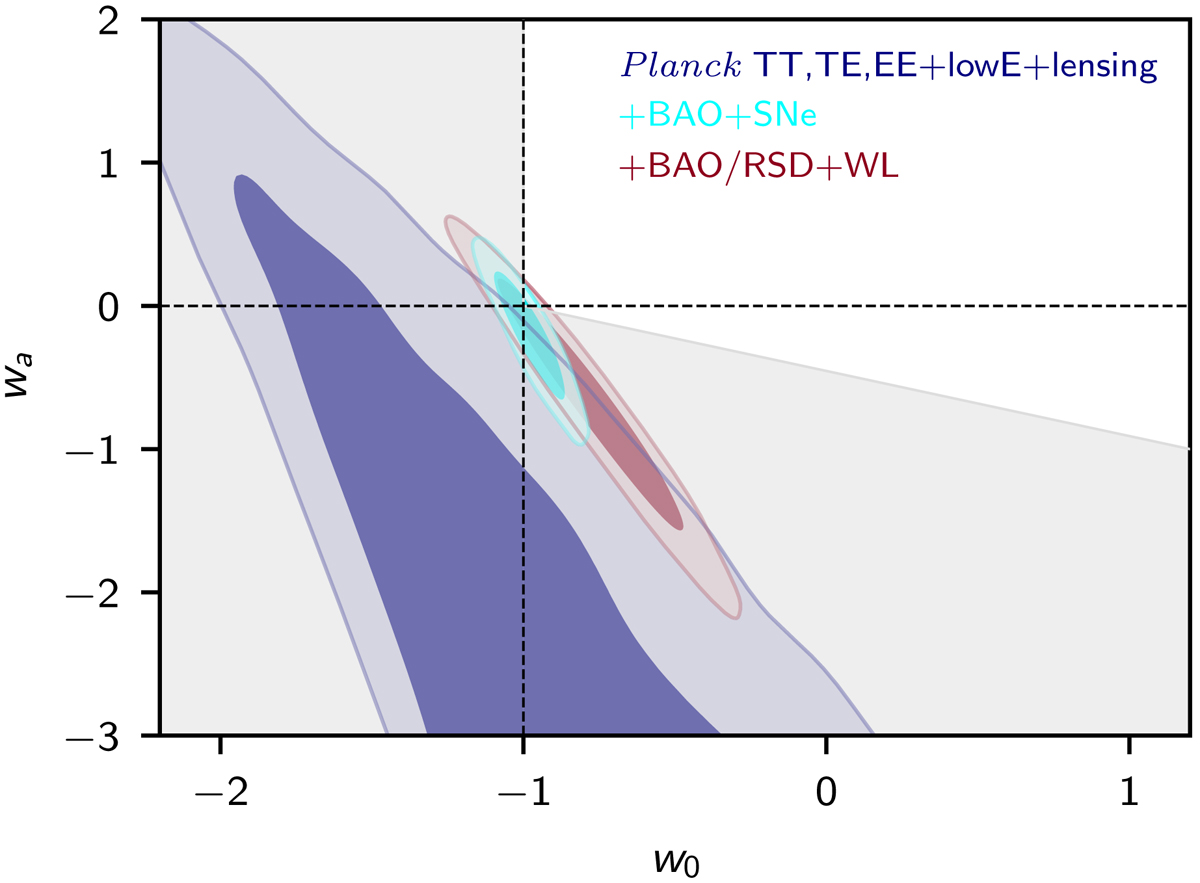Fig. 30.

Marginalized posterior distributions of the (w0, wa) parameters for various data combinations. The tightest constraints come from the combination Planck TT,TE,EE+lowE+lensing+SNe+BAO and are compatible with ΛCDM. Using Planck TT,TE,EE+lowE+lensing alone is considerably less constraining and allows for an area in parameter space that corresponds to large values of the Hubble constant (as already discussed in Planck Collaboration XIII 2016 and PDE15). The dashed lines indicate the point corresponding to the ΛCDM model. The parametric equation of state given by Eq. (49) stays out of the phantom regime (i.e., has w ≥ −1) at all times only in the (upper-right) unshaded region.
Current usage metrics show cumulative count of Article Views (full-text article views including HTML views, PDF and ePub downloads, according to the available data) and Abstracts Views on Vision4Press platform.
Data correspond to usage on the plateform after 2015. The current usage metrics is available 48-96 hours after online publication and is updated daily on week days.
Initial download of the metrics may take a while.


